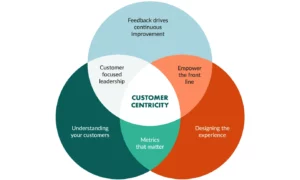A countdown timer is a simple yet powerful tool to increase engagement. As the name suggests, a countdown timer displays a countdown to a specific event or launch date, building anticipation and excitement. In the context of online events like webinars, product launches, or conferences, countdown timers serve multiple purposes:
- They grab attention and spark curiosity. The ticking countdown naturally catches viewers’ eyes and makes them wonder what’s coming up.
- They create urgency and scarcity. Displaying limited time remaining motivates viewers to pay attention and take action before time runs out.
- They keep the audience engaged. Countdown anticipation keeps viewers engaged and prevents drop offs.
- They build hype and buzz. Countdowns enhance pre-launch promotion and increase attendance.
But simply adding a countdown timer without a strategy does not guarantee increased engagement.
1. Start the countdown early
Don’t wait until the last minute to start displaying your countdown timer. Allow enough lead time for it to have the desired effect. Start your countdown at least 2-4 weeks before the date of your online event. The more notice you give, the better. It gives people time to schedule your event and more opportunities to come across the countdown as part of your promotional efforts across channels. Tools like Mailchimp and Meetup allow setting up email and social media campaigns that automatically display a dynamic countdown timer for upcoming events and meetings. Starting early also allows your audience to share and retweet your timer on social media, which further builds buzz.
2. Display the countdown prominently
Place your countdown timer prominently on your event website, registration page, emails, social posts, banners, and any other collateral. Make sure it’s visible front and center, not buried or hidden. Bold fonts, colors, and animations highlight the ticking countdown. When promoting your event on social media, include the countdown timer creatively in images and videos so viewers immediately see it. Facebook, YouTube, Instagram, and LinkedIn all allow you to include interactive graphics and overlays in your posts to showcase your countdown timer.
3. Link the timer to registration or sales pages
Once you’ve built curiosity and urgency with the countdown timer, use it to drive conversions by linking it to your event registration page or product sales page. Many tools like Wishpond allow adding clickable hotspots to countdown timer graphics which you link to landing pages or CTA buttons. You also create a sense of scarcity by showing available spots left for the event and incrementing the number as each registration comes in. This taps into the fear of missing out which compels viewers to register quickly before slots fill up.
4. Include value messaging with the timer
Alongside the countdown timer, include text and graphics that communicate the value attendees will get from the impending launch or event. Give them a reason why they should care about this countdown. Show what they stand to gain by tuning in or signing up before spots run out. For example, “Launching in 10 days 12 hours” expanded to “Our new app launches in 10 days – be the first to get 50% off for life”. This value messaging gives the countdown timer more meaning and motivation.
5. Have supporting content ready to fill the gap
As eager viewers await the countdown finish, you need to provide supporting content to keep their anticipation high and engagement steady.
- Teaser videos or graphics about the upcoming reveal
- Sneak peeks of new features or products
- Interviews and guest posts from speakers at the event
- Registration incentives like early bird discounts
- Contest or gamification elements like spin-to-win prizes
Schedule a content plan leading up to the launch date so viewers have lots of interesting material to consume while waiting for the timer to hit zero.
6. Create a sense of scarcity with tiered offers
Limited-time promotions linked to the countdown timer effectively create urgency and scarcity. Structure a series of tiered offers that get less attractive as the countdown progresses:
- Launch offer: First 100 registrations for $10 (4 weeks to go)
- Early bird: Registrations $20 (2 weeks to go)
- Last call: Registrations $30 (24 hours remaining)
As the timer ticks down, the price or exclusivity increases. Action is encouraged sooner rather than later. You even show the limited number of spots left at each pricing tier to indicate scarcity.
7. Add gamification elements
Make your countdown timer more interactive and immersive by integrating rewards, badges, leaderboards, wheel spins, or other game mechanics.
- Users get points/rewards for sharing the countdown on social media
- Top referrers make it to a public leaderboard
- Visitors spin a prize wheel for discounts once the timer ends
- Early registrations get access to an exclusive preview content area
With gamification, viewers engage with your timer more and grow virally.
8. Have a strong call to action at zero
When the countdown finally hits zero, the big reveal moment has arrived. But you still need to direct users to take action with a strong CTA. This includes clicking through to the virtual event, adding products to the cart, accessing gated content, signing up for services, or claiming discounts. The countdown timer primes users and builds anticipation – capitalize on that momentum with a clear and compelling CTA when the timer expires.
9. Retain audiences post-launch
You launch or reveal at zero a high point but don’t lose audiences after that. Retain their attention by providing value and engagement opportunities.
- Access to exclusive content for all timer participants
- Ongoing discussion forums, and support groups about the launch topic
- Surveys about their event/launch experience
- Additional limited-time offers related to the reveal
- Countdown recaps and highlights shared on social media
- Teasers building up to your next event or product countdown
Reward them for being a part of your countdown journey and they’ll eagerly await your next one.
10. Continually test and optimize
Assessing performance and testing variations will improve your countdown timer.
- Countdown length – 7 days vs. 14 days vs. 30 days
- Messaging frequency – 1 post per day vs. 3 posts per week
- Offer exclusivity – 100 spots vs. limited spots
- Gamification rewards
- CTA variations
Check click-through rates, conversion rates, social shares, and engagement metrics between variations. Refine your countdown timer over time for an ever-increasing effect on registrations, sales, and online event turnout.



































